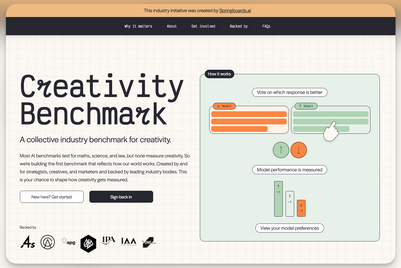
Many international brands have enhanced their digital appearances and user experiences considerably: pithy text, smart web navigation, and minimalistic design. Facing those changes, Chinese brands are still struggling.
Early this year I was involved in a project to create a new agency deck for a Chinese advertising agency with the goal to “build a smart agency deck containing as little text as possible”.
We did exactly that, and when we presented it to the GM, he liked it but said, “I wonder if it is too empty. Should we add more client names?” We tried hard to convince him that direct messaging and a clean layout are just about right, but he optioned otherwise.
This is a typical example of the dilemma that Chinese brands and Chinese marketing professionals have: to balance between preserving their own verbose identity and having an international image.
Until today, containing as much information as possible has been the norm for Chinese websites. Take a peek at the popular Chinese career website Zhaopin.com (see left).

It all started with the Long March
Socialism has shaped China since the 1920s, and its cultural and even aesthetical influences on the country have been inevitable. The New China under the Communist Party’s rule has naturally inherited tastes that would be unacceptable in the Western world.
In the book The Long March, Sun Shuyun retraced the Red Army’s manoeuvre to escape from the Kuomintang’s military campaigns of the 1930s, which ultimately led the Communists to prevail.
If the Long March is a brand, the Red Army launched it well. They relied on propaganda to promote Communist ideas among poor farmers.
The preferred method was to make wall posters to convey their messages to the masses. The frequency of those messages mattered more than the design and the content. A Long March veteran said in the book that “ [the propaganda unit] had a minimum quota of 50 posters every day, and sometimes as many as 200.”
When arriving at a new village, the “poster team” had to "cover" it with slogans. Regardless of message quality, 18,400 posters were made in two days when the Red Army took the town of Zunyi, “turning the town into a world of color”.
It might be that all the sorry features of today's Chinese digital communication find roots in the country's early Communist days.
The Red Army posters worked because, as the author pointed out, those posters “pacify frightened locals, explain Communist ideas, win people’s confidence, provided entertainment and colour in Chinese peasants’ lives”.
What to expect next
Chinese consumers today have much more buying power than their peasant predecessors, and they have the opportunity to cultivate their taste and explore alternative aesthetics.
The Long March poster style is a collective experience for most Chinese, and it takes time to improve design taste and communication quality in the digital sphere nationwide.
But as part of a larger trend, Weibo’s endeavour (see right) to improve user experience should not be underestimated. We have seen changes coming: Taobao has recently adopted a new minimal look just before the “Double 11” e-shopping spree; Xiaomi, one of China’s biggest smartphone brands, has built a reputation for its design simplicity.
The change has come just in time as mobile has became the prime platform for Chinese consumers. Obviously any attempts to win over consumers on the three-inch screen should come with a neat design style, like the popular Chinese chatting application WeChat.
As much as we understand the origins of the country’s overloaded online marketing, we also foresee that Chinese consumers these days want more than be buried under kilobytes and kilobytes of Red Army-style posters.
Pan Chenyin is digital strategist at Fireworks China.



.jpg&h=334&w=500&q=100&v=20250320&c=1)



.png&h=334&w=500&q=100&v=20250320&c=1)



.png&h=334&w=500&q=100&v=20250320&c=1)





.png&h=268&w=401&q=100&v=20250320&c=1)


.png&h=268&w=401&q=100&v=20250320&c=1)